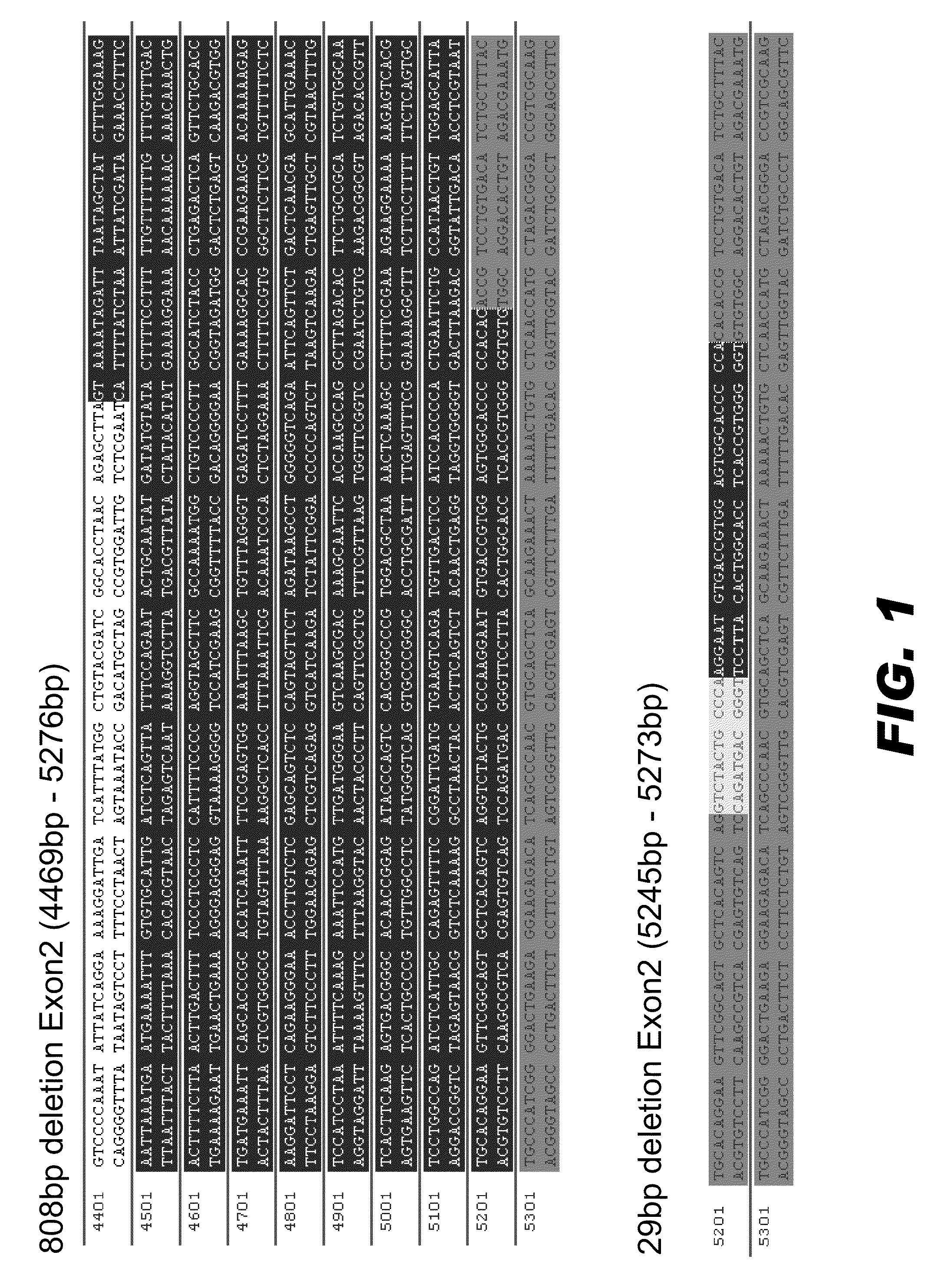Genomic editing of genes involved in inflammation
- Summary
- Abstract
- Description
- Claims
- Application Information
AI Technical Summary
Problems solved by technology
Method used
Image
Examples
example 1
Genome Editing of CCR2 in a Model Organism
[0094]Zinc finger nuclease (ZFN)-mediated genome editing may be used to study the effects of a “knockout” mutation in an inflammation-related chromosomal sequence, such as a chromosomal sequence encoding the CCR2 protein, in a genetically modified model animal and cells derived from the animal. Such a model animal may be a rat. In general, ZFNs that bind to the rat chromosomal sequence encoding the inflammation-related protein CCR2 may be used to introduce a non-sense mutation into the coding region of the CCR2 gene, such that an active CCR2 protein may not be produced.
[0095]Capped, polyadenylated mRNA encoding the ZFN may be produced using known molecular biology techniques, including but not limited to a technique substantially similar to the technique described in Science (2009) 325:433, which is incorporated by reference herein in its entirety. The mRNA may be transfected into rat embryos. The rat embryos may be at the single cell stage ...
example 2
Generation of a Humanized Rat Expressing a Mutant Form of Human Perforin-1
[0097]Missense mutations in perforin-1, a critical effector of lymphocyte cytotoxicity, lead to a spectrum of diseases, from familial hemophagocytic lymphohistiocytosis to an increased risk of tumorigenesis. One such mutation is the V50M missense mutation where the valine amino acid at position 50 in perforin-1 is replaced with methionine. ZFN-mediated genome editing may be used to generate a humanized rat wherein the rat PRF1 gene is replaced with a mutant form of the human PRF1 gene comprising the V50M mutation. Such a humanized rat may be used to study the development of the diseases associated with the mutant human perforin-1 protein. In addition, the humanized rat may be used to assess the efficacy of potential therapeutic agents targeted at the inflammatory pathway comprising perforin-1.
[0098]The genetically modified rat may be generated using the methods described in Example 1 above. However, to generat...
example 3
Editing the Pten Locus
[0099]ZFNs that target and cleave the Pten locus in rats were designed and tested for activity essentially as described above in Example 1. An active pair of ZFNs was identified. The DNA binding sites were 5′-CCCCAGTTTGTGGTCtgcca-3′ (SEQ ID NO:1) and 5′-gcTAAAGGTGAAGATCTA-3′ (SEQ ID NO:2). Capped, polyadenylated mRNA encoding the active pair may be microinjected into rat embryos and the resultant embryos may be analyzed as described in Example 1. Accordingly, the Pten locus may be edited to contain a deletion or an insertion such that the coding region is disrupted and no functional gene product is made.
PUM
| Property | Measurement | Unit |
|---|---|---|
| color | aaaaa | aaaaa |
| color figures | aaaaa | aaaaa |
| enzyme activity | aaaaa | aaaaa |
Abstract
Description
Claims
Application Information
 Login to View More
Login to View More - R&D
- Intellectual Property
- Life Sciences
- Materials
- Tech Scout
- Unparalleled Data Quality
- Higher Quality Content
- 60% Fewer Hallucinations
Browse by: Latest US Patents, China's latest patents, Technical Efficacy Thesaurus, Application Domain, Technology Topic, Popular Technical Reports.
© 2025 PatSnap. All rights reserved.Legal|Privacy policy|Modern Slavery Act Transparency Statement|Sitemap|About US| Contact US: help@patsnap.com


